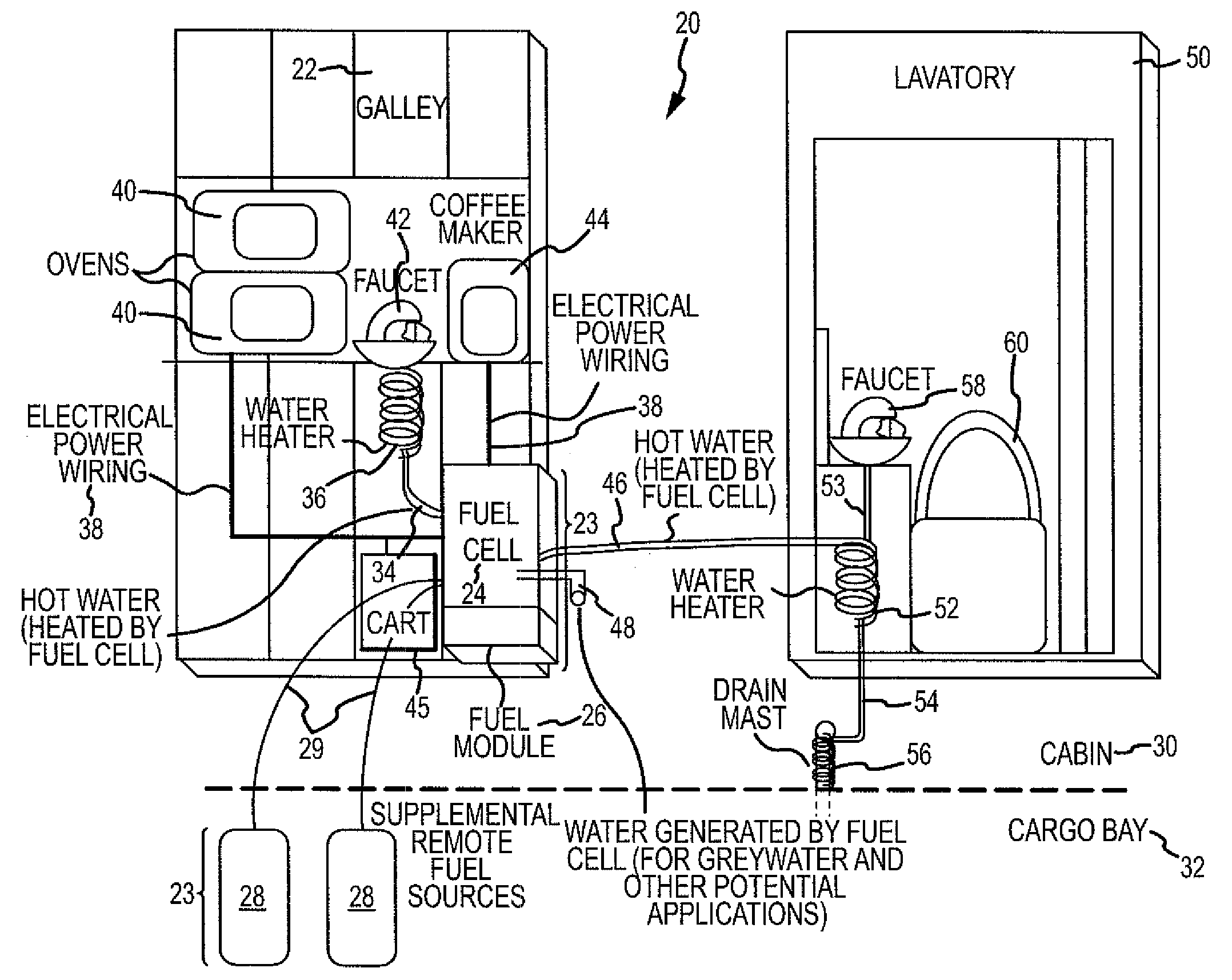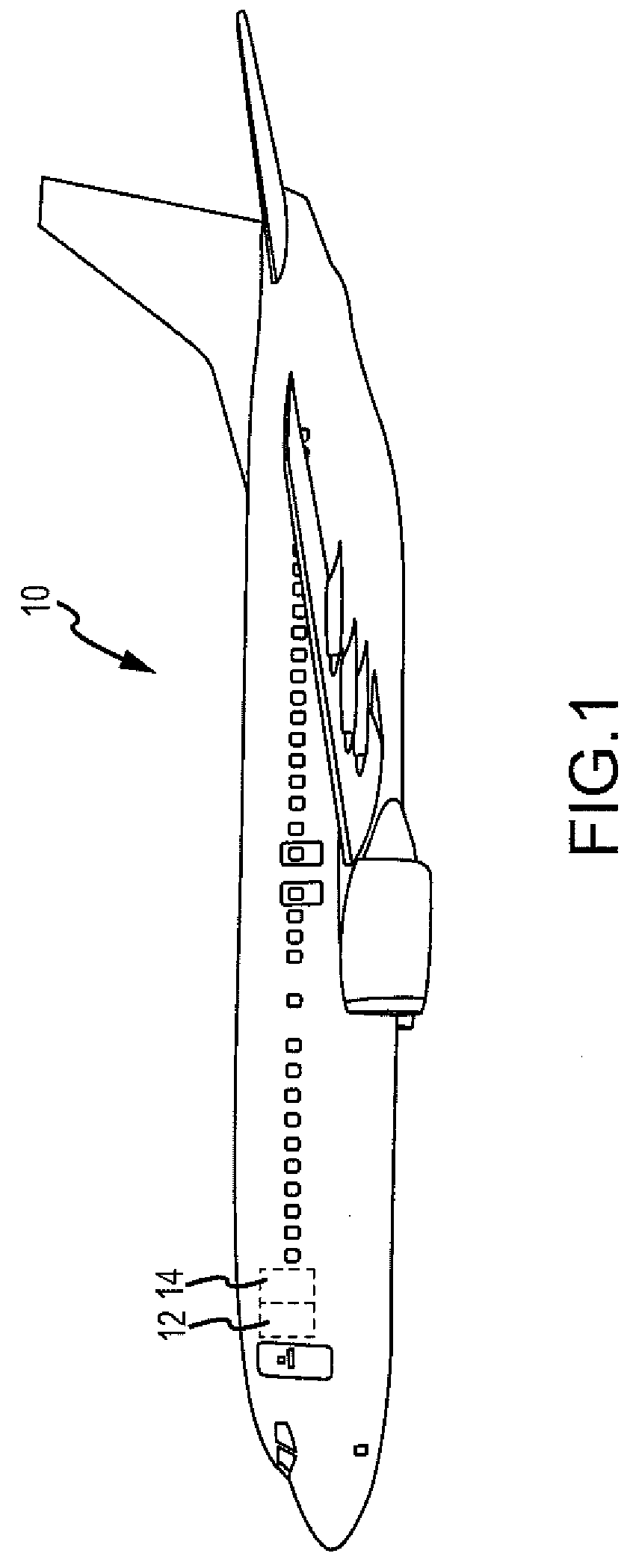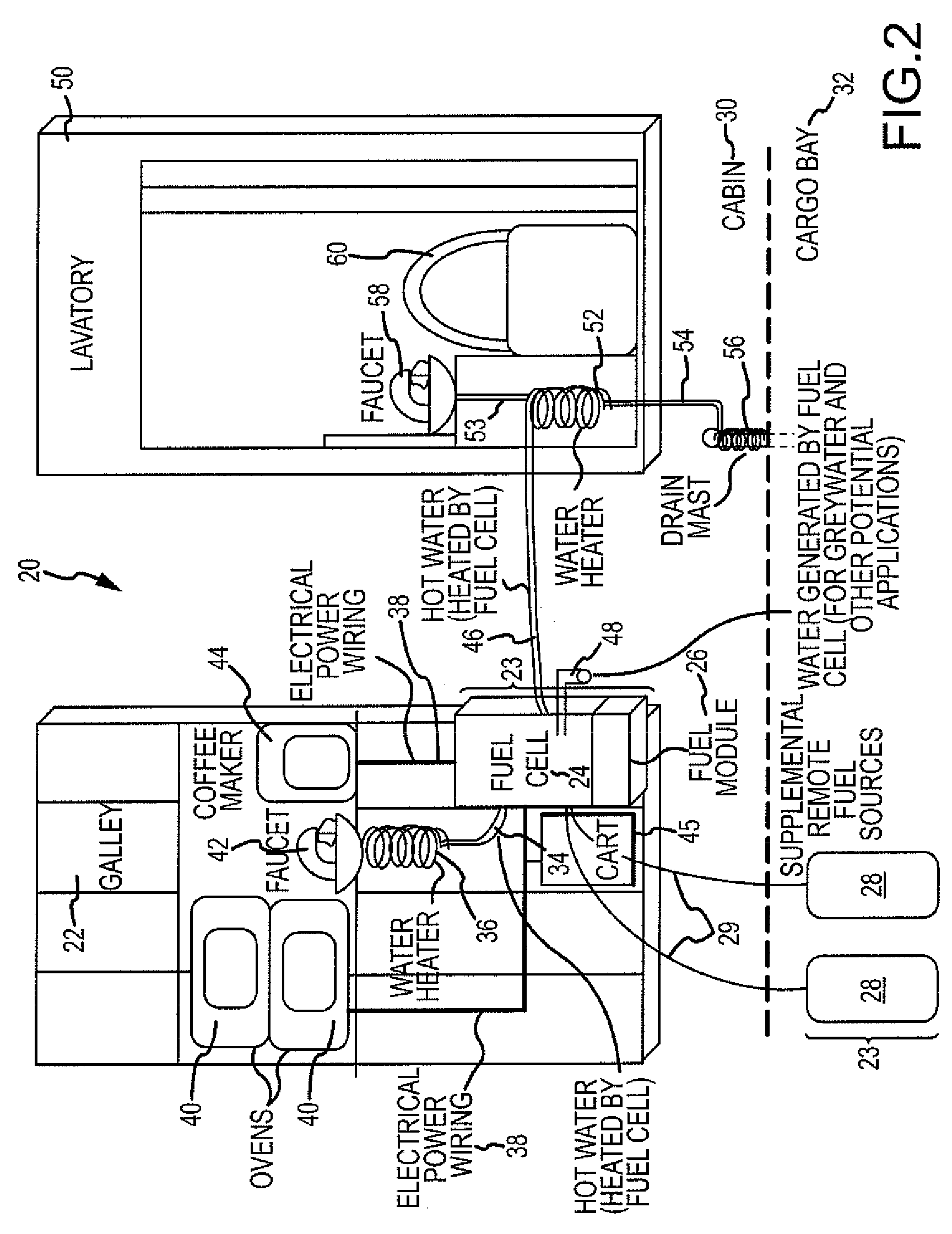Localized utility power system for aircraft
a utility power system and aircraft technology, applied in the field of power or energy systems, can solve the problems of increasing the overall weight and fuel burn of the aircraft, the associated volume and weight of the equipment can be significant, and the electrical power is required to be tremendous, so as to reduce the complexity, improve the efficiency, and reduce the weight
- Summary
- Abstract
- Description
- Claims
- Application Information
AI Technical Summary
Benefits of technology
Problems solved by technology
Method used
Image
Examples
Embodiment Construction
[0022]Disclosed embodiments will now be described more fully hereinafter with reference to the accompanying drawings, in which some, but not all of the disclosed embodiments are shown. Indeed, several different embodiments may be provided and should not be construed as limited to the embodiments set forth herein. Rather, these embodiments are provided so that this disclosure will be thorough and complete and will fully convey the scope of the disclosure to those skilled in the art.
[0023]The disclosure provides for a power or energy system that provides localized utility power or energy to a vehicle such as an aircraft. In particular, the power or energy system provides electrical power or energy and heat energy to a galley, lavatory, or similar utility loads in an aircraft. The system of the disclosed embodiments may be used in vehicles, including but not limited to, aircraft such as airplanes, automobiles, trucks, maritime vessels, recreational vehicles, and other vehicles and craf...
PUM
| Property | Measurement | Unit |
|---|---|---|
| length | aaaaa | aaaaa |
| electrical energy | aaaaa | aaaaa |
| heat energy | aaaaa | aaaaa |
Abstract
Description
Claims
Application Information
 Login to View More
Login to View More - R&D
- Intellectual Property
- Life Sciences
- Materials
- Tech Scout
- Unparalleled Data Quality
- Higher Quality Content
- 60% Fewer Hallucinations
Browse by: Latest US Patents, China's latest patents, Technical Efficacy Thesaurus, Application Domain, Technology Topic, Popular Technical Reports.
© 2025 PatSnap. All rights reserved.Legal|Privacy policy|Modern Slavery Act Transparency Statement|Sitemap|About US| Contact US: help@patsnap.com



